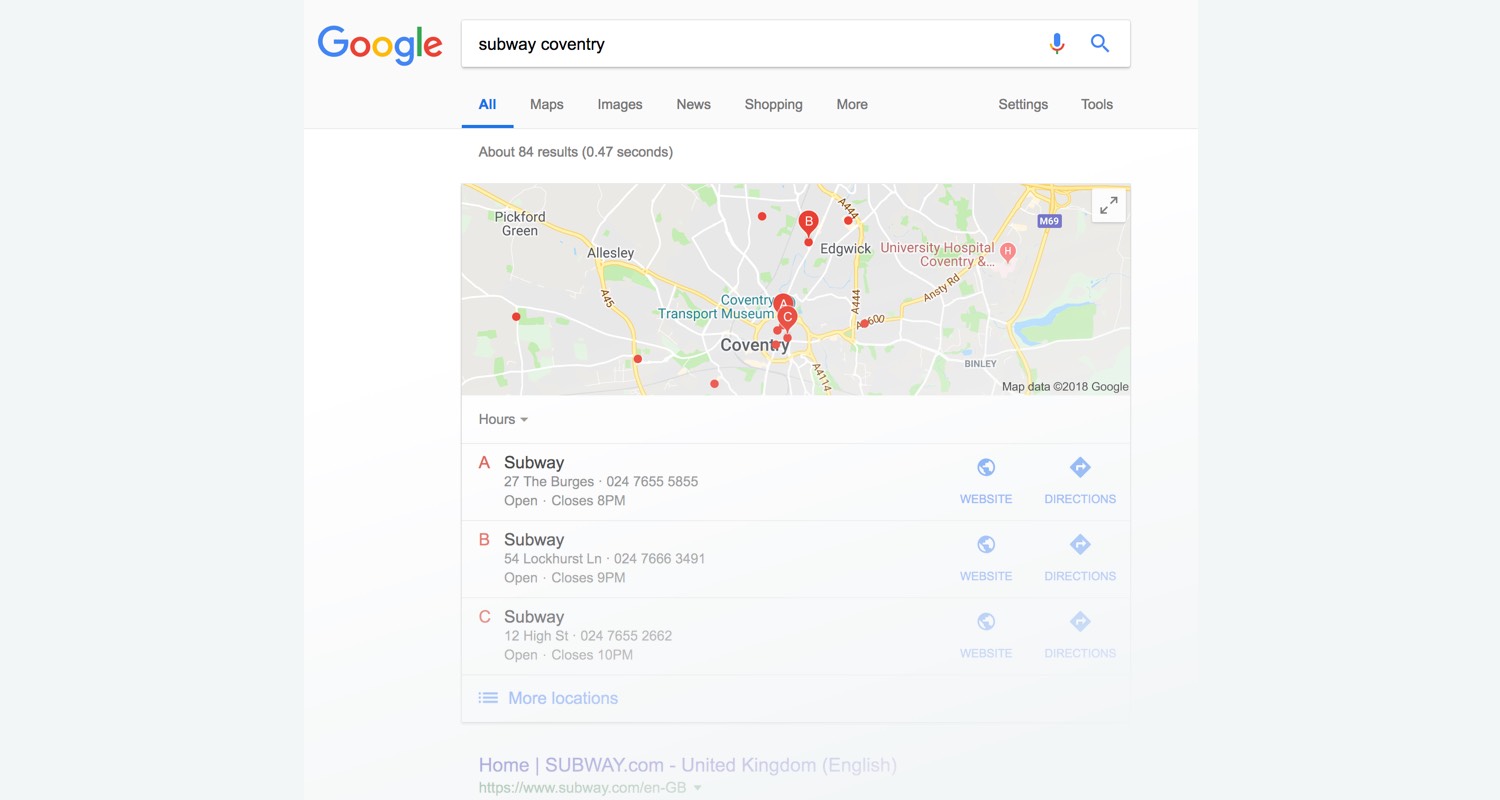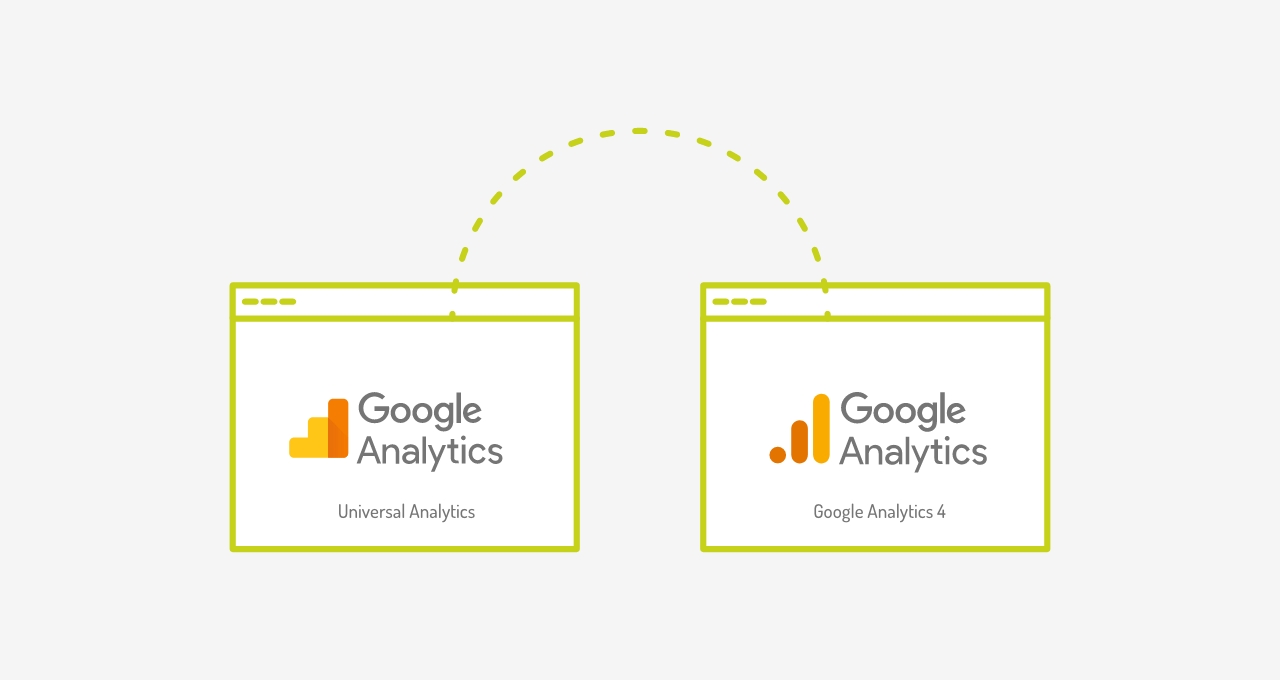
Wondering how local SEO is different to traditional SEO? With Local SEO you’re trying to provide a more personalised experience for a user by getting your website to rank high for searchers in a specific geographic area. Whereas, with traditional or ‘regular’ SEO, you’re trying to get a website to rank high whenever particular keywords are used in a search.
If you optimise your food business’s website efficiently for local SEO, it can be an effective way to market your produce to users in your geographical area (or areas if you have multiple locations). With a different algorithm to traditional SEO, results are based on relevance, prominence and proximity of a user to your address when searching instead of just keywords.
For example if you have a restaurant or takeaway, your business’s physical location would affect your local SEO. But what about if you have several restaurants in different towns – how do you optimise for your website/s then? And what about if you’d like to attract customers from nearby locations, but you only have one physical address to work with?
Although you can’t lie about your business address online, you can take advantage of several other tips and tricks that will help you rank for local SEO. We’ve suggested 9 simple steps to follow to increase your chances of getting found by users online in your area…
1. Links
Inbound links are those that direct traffic to your website from a third-party website. The more links from local businesses you have the better. It doesn’t matter about the quality of the websites the links come from either.
Outbound links are those from your website to others. These are just as valuable as inbound, but if they’re linked to credible pages it can help improve your ranking. Try not to include any more than 30 links to different websites on any one webpage as Google may become suspicious, and lower your results in a search engine results page (SERP).
2. Content
Did you know the average person scrolls 3,000 feet of content per day? Therefore you don’t need to worry about restricting the amount of content on a webpage – as long as it’s relevant to readers and is engaging. Having a good mix of blog topics promoting your restaurant, your team or the local area will be beneficial for local SEO.
3. Google My Business

There are surprisingly many businesses who don’t have a personalised Google My Business page and are missing out on the opportunities it offers for local SEO. It’s easy to set up a Google My Business page for your food business and allows you to list your physical address. This’ll build trust with Google who will feel confident to list your website higher on a SERP.
4. Website
The way Google displays results on a SERP is constantly changing. However there are on-page practices you can follow to improve your chances of being listed higher than competitors.
Ensure every page on your website is optimised for local SEO with a focus keyword. Although there is currently no limit on the number of keywords you can include on a webpage, you want your content to read naturally and not feel like a robot has written it – so try not to include too many! In terms of length, you want your content to be long enough to answer a problem or provide a solution to a user without waffling on.
5. Reviews
If you know your customers love your food, get them to share it online! Whether that’s on traditional review sites such as TripAdvisor, Yell or Trustpilot, or local review and community sites – variety is key. You can also copy the ‘write a review’ link from a website and share it with customers to encourage reviews that will help with your SERP ranking.
6. Social Optimisation

Although it can be tempting to set up a profile on every social media platform, it’s best practice to only focus on 3. Try to post a mix of 80% content and 20% sales posts to help with local SEO. Did you know Facebook offers a ‘Business Locations’ feature? If you have more than one restaurant, it allows you to add multiple business locations, build a local presence and help people nearby find you.
7. External location
There are plenty of opportunities online for your business to be referenced by a third-party. Is there a local food blogger or restaurant reviewer you could contact to feature your business? You could even pair with another local business for a guest blog or utilise local and industry listing websites, such as Yell or TripAdvisor. Wherever your business or website is listed, ensure the spelling is correct as Google can penalise for inconsistencies or mistakes!
8. Mobile Optimisation
It’s important to ensure your website design is mobile-friendly and can adapt depending on what device it’s viewed on by a user. If your website isn’t suitable for mobile users, Google can list you lower down on a SERP so it’s worth ensuring. Add in ‘click to call’ buttons on your website, allow check-ins on Facebook and consider other ways you could engage with mobile users online.
9. Personalisation

A user’s location will obviously show different results when they search online – but did you know it can depend on the device they’re using as well? Local search uses recent search history – think the last few days not weeks! – to personalise results to a user, and Google lists what it thinks will be the most relevant first. It does this through history, cookies and by using other known information about the searcher. These days, no two people receive the same identical search results. Don’t try and spam or fool Google in anyway, just focus on creating relevant content to your food business and you’ll have more chance of your content ranking.
It’s important not to believe everything you hear banded around about both traditional and local SEO. Instead, you can work with an agency that has experience in SEO best practice and food businesses. As different industries can throw up different results for local SEO, it’s a good idea to test and measure traffic to see what works.
Looking to optimise your website or social channels for local SEO, or need some advice as to how to get started? Discover how Eat Marketing can help by getting in touch today.



